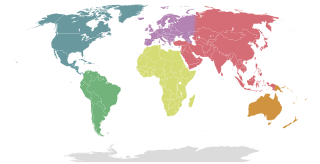 W
WChristianity in Japan is among the nation's minority religions in terms of individuals who state an explicit affiliation or faith. Between less than 1 percent and 1.5% of the population claims Christian belief or affiliation. However, Christianity has played a crucial role in the shaping of Japanese identity and the relationship between religion and the state for more than four centuries. Most large Christian denominations, including Roman Catholicism, Protestantism, and Orthodox Christianity, are represented in Japan today. The majority of Japanese people are of the Shinto or Buddhist faith. The majority of Japanese couples, typically 60–70%, are wed in Christian ceremonies. This makes Christian weddings the most influential aspect of Christianity in contemporary Japan.
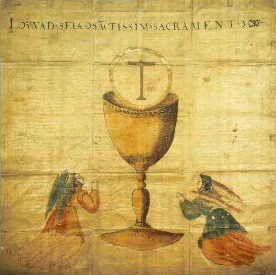 W
WAmakusa Christian Museum opened in Amakusa, Japan, in 1966 and in March 2014 received its four millionth visitor.
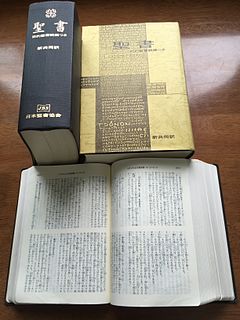 W
WThere are two main translations of the Bible into Japanese widely in use today—the New Interconfessional Version and the New Japanese Bible. New Interconfessional Translation Version is published by the Japan Bible Society and the New Japanese Bible is published by Inochinokotoba-sha(いのちのことば社). There are with different translation goals. The New Japanese Version aims to be used as a literal translation using modern Japanese while the New Interconfessional Version aims to be ecumenically used by all Christian denominations and must therefore conform to various theologies. Protestant Evangelicals most often use the New Japanese Version, but the New Interconfessional Version is the most widely distributed and the one used by the Catholic Church, the United Church of Christ, Lutheran Church factions and many Anglicans in Japan.
 W
WThe Flying House, known in Japan as Tondera Hausu no Daibōken , is an anime television series produced by Tatsunoko Productions broadcast between April 1982 and March 1983 on TV Tokyo, and distributed by the Christian Broadcasting Network in the United States. In 2010, the Christian Broadcasting Network made the 52 episodes available for viewing online.
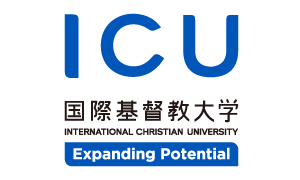 W
WInternational Christian University is a non-denominational private university located in Mitaka, Tokyo, Japan, commonly known as ICU. With the efforts of Prince Takamatsu, General Douglas MacArthur, and BOJ President Hisato Ichimada, ICU was established in 1949 as the first liberal arts college in Japan. Currently the university offers 31 undergraduate majors and a graduate school. The Ministry of Education, Culture, Sports, Science and Technology selected ICU as one of the 37 schools for The Top Global University Project in 2014.
 W
WThe New Interconfessional Translation Bible is a Japanese translation of the Christian Bible, completed in 1987, and is currently the most widely used Japanese Bible, by both Catholics and Protestants.
 W
WMakuya , based at the Tokyo Bible Seminary, is a religious movement in Japan which was founded in 1948 by Ikurō Teshima. To grasp the inner truth of biblical religion, or the "Love of the Holy Spirit" as Teshima puts it, and extol this existential love by embodying it and living accordingly is the essence of the Makuyas' religious life.
 W
WThe Manga Bible: From Genesis to Revelation is an original English-language manga adaptation of the Bible created by British artist Ajinbayo "Siku" Akinsiku, who was responsible for the concept and the art and the script writer Akin Akinsiku. It was released in July 2007 by Galilee Trade. They summarize the narrative of the Bible in a 200-page graphic novel including the Old Testament and the New Testament. With their work, they combine the Western and the Japanese culture to tell the Bible in a new way. The book is especially aimed at readers between the ages of 15 to 25. Church representatives were praising the graphic novel, as opening up the ideas of the Bible to a new target group. Ajinbayo Akinsiku was born in England and grew up in Nigeria; he now lives again in England. He thus represents different cultures in his artistic work, which becomes also apparent in The Manga Bible. He became known for his work on 2000 AD and Judge Dredd.
 W
WMihashira Torii or Mitsubashira Torii are a type of torii gate found in Shinto architecture. Like its name implies, it is a triangular structure that appears to be formed from three individual torii. It is thought by some to have been built by early Japanese Christians to represent the Holy Trinity.
 W
WShingō is a village located in Aomori Prefecture, Japan. As of 31 March 2020, the village has an estimated population of 2,408 in 922 households and a population density of 16 persons per km². The total area of the village is 150.77 square kilometres (58.21 sq mi).
 W
WSuperbook, also known as Animated Parent and Child Theatre , is an anime television series from the early 1980s, initially produced at Tatsunoko Productions in Japan in conjunction with the Christian Broadcasting Network in the United States and more recently solely produced by CBN for global distribution and broadcast.
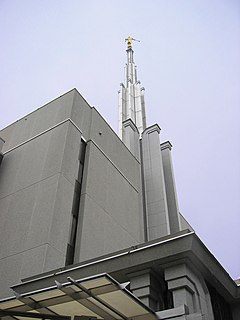 W
WThe Church of Jesus Christ of Latter-day Saints was established in Japan in 1901 when the church's first missionaries arrived on August 12. Among them was Heber J. Grant, who was then a member of the Quorum of the Twelve and later became the church's 7th president. Horace S. Ensign, Louis A. Kelsch and Alma O. Taylor accompanied Grant. The LDS Church's first baptism in Japan was on March 8, 1902, when Grant baptized Hajime Nakazawa, a former Kannushi. The Book of Mormon was translated three times. The first translation, which took over six years, was completed by Taylor in 1909. It was then recommended that the Book of Mormon be translated into bunshō, a more elegant literary style, which was done by Chōkō Ikuta in 1909, shortly before it was published and distributed. The third translation in 1957 was done by Tatsui Sato. In 1995, the Book of Mormon was translated again into a more colloquial style.
 W
WUrakami was an area in the northern part of the city of Nagasaki, Japan.